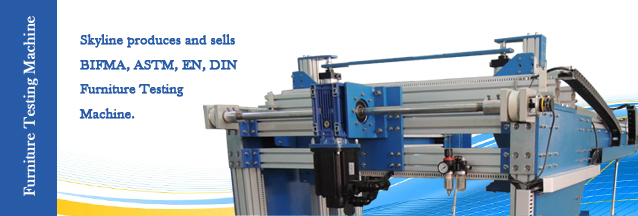 Toys Testing Equipment
Toys Testing Equipment Footwear Testing Equipment
Footwear Testing Equipment Tensile Testing Machine
Tensile Testing Machine Environmental Test Chamber
Environmental Test Chamber Building Material Flammability Test Equipment
Building Material Flammability Test Equipment Paper Testing Equipment
Paper Testing Equipment Spectacle Frames Testing Equipment
Spectacle Frames Testing Equipment Oil Analysis Testing Equipment
Oil Analysis Testing Equipment Lab Test Equipment
Lab Test Equipment Electronic Testing Equipment
Electronic Testing Equipment Stationery Testing Equipment
Stationery Testing Equipment Flammability Test Equipment
Flammability Test Equipment Furniture Testing Machine
Furniture Testing Machine Textile Testing Equipment
Textile Testing Equipment
 How to evaluate the corrosion resistance of lubricating grease?
How to evaluate the corrosion resistance of lubricating grease? - 2026/1/2
- How to evaluate the corrosion resistance of lubricating grease? A comprehensive guide to lubricating grease corrosion resistance testing and professional testing equipment. A tiny corrosion spot in...
 The Hong Kong fire once again rings the alarm: How can laboratories build a safety defense line for building materials through combustion tests?
The Hong Kong fire once again rings the alarm: How can laboratories build a safety defense line for building materials through combustion tests?- 2025/12/25
- The Hong Kong fire once again rings the alarm: How can laboratories build a safety defense line for building materials through combustion tests? The recent serious fire accident in Hong Kong has s...
 The Indian furniture inspection market welcomes new regulations!
The Indian furniture inspection market welcomes new regulations!- 2025/11/28
- The Indian furniture inspection market welcomes new regulations! The demand for these testing instruments will soar in 2026. New regulations in India are about to come into effect, and furniture insp...
- More>
What is oil testing equipment? What is the principle and function?
Oil analysis testing equipment refers to equipment used to detect oil, typically used to detect high levels of contaminants in oil. This type of equipment can be used for a variety of applications, including industrial production, environmental monitoring, and research. This type of equipment typically includes gas chromatographs, gas chromatography-mass spectrometers, and gas chromatography-spectrophotometers, among others.
The working principle of an oil detection instrument is the use of a physical or chemical method to detect contaminants in oil. For example, a gas chromatograph determines the levels of various chemicals in an oil sample by breaking down the sample into its constituent chemicals and then measuring the speed at which they move through a column. Another common type of oil detection instrument is a gas chromatography-mass spectrometer, which can determine the precise levels of various chemicals in an oil sample by analyzing a mass spectra. Different oil detection instruments may use different detection methods, but their basic principles are similar.
The purpose of an oil detection instrument is to detect contaminants in oil, helping to determine its quality and potential health risks. In addition, oil detection instruments can also be used for environmental monitoring to help identify the effects of pollutants on the environment and take appropriate measures to protect it. In industrial production, oil detection instruments can also be used to monitor the production process to ensure product quality.
- ·New type Crockmeter- Manual Is Newly Released!
- ·Chinese New Year's Holiday!
- ·Skyline Instruments to SASO Installing and Training with a perfect Ending
- ·2014 New Design Toys 2m/s. Dynamic Strength Tester
- ·In 2014, the latest launched Caster and Chair Base Durability Tester
- ·The Blockbuster Launched Chair Stability Tester

 Toys Testing Equipment
Toys Testing Equipment Footwear Testing Equipment
Footwear Testing Equipment Tensile Testing Machine
Tensile Testing Machine Environmental Test Chamber
Environmental Test Chamber Building Material Flammability Test Equipment
Building Material Flammability Test Equipment Paper Testing Equipment
Paper Testing Equipment Spectacle Frames Testing Equipment
Spectacle Frames Testing Equipment Oil Analysis Testing Equipment
Oil Analysis Testing Equipment Lab Test Equipment
Lab Test Equipment Electronic Testing Equipment
Electronic Testing Equipment Stationery Testing Equipment
Stationery Testing Equipment Flammability Test Equipment
Flammability Test Equipment Furniture Testing Machine
Furniture Testing Machine Textile Testing Equipment
Textile Testing Equipment

 English
English 中文
中文 Español
Español française
française العربية
العربية Русский
Русский







